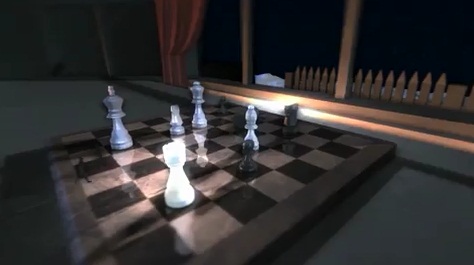
For New Readers
Origins of Hugi
In the 1990s there were several people in the German speaking countries (Germany, Austria, Switzerland) who were making diskmags. These diskmags dealt with computers, programming, politics, lifestyle, literature and various other topics. Some day, it became a fashionable trend among German speaking diskmag editors to make demoscene magazines. Hugi is one of the magazines which followed this trend, and it has turned out to be the longest lasting of all.
The 'Diskmag Scene' Nowadays
In the years 2005 - 2010, three PC diskmags were more or less frequently released: Hugi, Pain and Zine. Pain and Zine have different roots than Hugi. Pain was originally a magazine for the Swiss scene that became an international magazine after 2000. Zine is one of the oldest demoscene magazines, with its first issues released as early as 1989, and it was revived by one of its editors in the 2000s.
Magazines which had similar roots as Hugi were Cream, Digital Chat, Mars, WildMag, TAP.MAG and Image - none of these issue any more.

The Demoscene
The demoscene is an international community of computer artists who produce various sorts of multimedia art. The most important category is the demo. A demo is usually a non-interactive computer application that displays a short animation (hardly ever more than 15 minutes) accompanied by music. Another category is the intro, which is essentially a demo with a size limitation of 64 or 4 kilobytes.
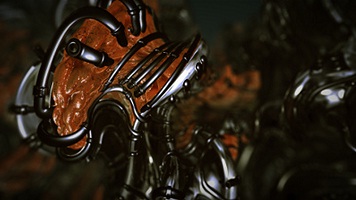
Demoscene artists, also called sceners, regularly meet at parties where they present their latest creations. The artworks compete with each other in competitions (short: "compos"). The winners of the competitions get prizes. Apart from demo and intro competitions, there are also contests for single graphics, music tunes and sometimes also rather peculiar things such as hard disk throwing. The demoscene is active on a large number of platforms, ranging from game consoles and handhelds to the PC. Historically the demoscene has been especially active on Commodore 64, Amiga and x86 PC. In Russia there is also a big ZX Spectrum scene.
Important Demogroups
Some of the active demogroups that make high-quality productions for Windows are: Andromeda Software Development (ASD), Farbrausch, Fairlight, CNCD, Conspiracy, Still, Brainstorm, Kewlers, Traction, RGBA. This of course does not mean that the other demogroups are bad, it just means that you ought to know these groups and their releases. Most of the releases can be found at the website pouet.net. Here are links to the pouet.net pages of these individual groups. Especially worth checking out are productions with a star, a trophy or several hearts next to their names.
ASD
Farbrausch
Fairlight
CNCD
Conspiracy
Still
Brainstorm
Kewlers
Traction
RGBA
Which demos are worth watching? To get a good overview, check out the Awards page at Scene.org. It contains the names of the productions that were awarded Scene.org Awards in the years these awards were given, and for the remaining years it gives viewing tips.
On the next couple of page, Hugi's main editor Adok will introduce some of his favourite demos to you.
My Favourite Demos
Introduction
Throughout the years as Hugi editor, I have mostly worked on the diskmag and hardly ever found time to sit down and watch a demo. But from time to time, I did watch demos. I thought that it might be a good idea to write an article about my own favourite demos, those which I personally enjoyed watching.
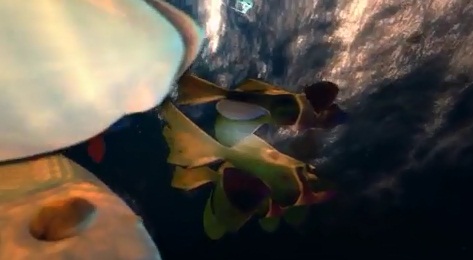
The Popular Demo
This demo was released by the German group Farbrausch in 2003. It is based on the Werkkzeug engine developed by Chaos, which allows artists to create their own demos without programming. The actual demo was made by Fiver2, who is also responsible for most of the visuals. He was supported by several other graphic artists, including Sarah Hill, giZmo, Tiberius and Phaser. The music was composed by Wayfinder and it is a great tune which alone makes the demo worth watching. The atmosphere is very cheerful. You get to see people dancing and walking through forests. The animation of the characters is very realistic, and the object surfaces beam intensely.

Heaven Seven
This 64k intro was made by the Hungarian group Exceed and released in 2000. It is a realtime-raytracing intro mostly with shades of blue and calming music. The code was done by Picard, who had joined Exceed after being very successful at Hugi Coding Compos, which brought him to the attention of d-lee, the main organizer of Exceed. Other artists involved in this intro were Warpig, Shaman and Stephen.
Heaven Seven features "scene poetry" and nice animations of people, spheres and other objects. It is probably one of the visually most appealing intros of its time and it fully deserves still being one of the most popular demoscene productions of all times according to pouet.net.
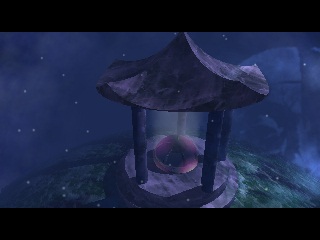
Iconoclast
This demo by the Greek group ASD (Andromeda Software Development) was first presented at Assembly 2005. Like all ASD releases, it was coded from scratch, without using a demo tool such as Farbrausch's Werkkzeug. The coder, Navis, implemented a veritable fireworks of effects. Although not all of them are visually appealing, they introduce a great variety. You won't easily get bored. The music was contributed by aMUSiC and Leviathan. In my opinion it is one of the best demo soundtracks of all.
![]()
Animal Attraction
Released at The Gathering 2006, this ASD demo beats Iconoclast in some aspects. It features great animations of red blood cells, ribbons and an endless zoomer. In short, great effects. Also, it is visually quite appealing most of the time. There are also various pictures included in this demo, drawn by Amoivikos, who used to contribute title pictures to Hugi in the past when he was known as Kthulu and a member of the notorious group Nextempire (Hugi #21, #22, Hugi.GER #1).
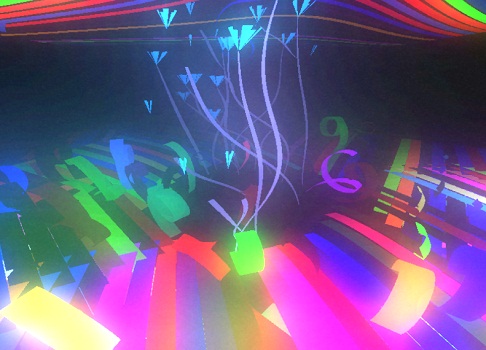
Masagin
Masagin was released by the groups Farbrausch and Neuro, and it served as an invitation demo for the NVision 08 demo contest. The demo itself was released at Breakpoint 2008, where it made the first place. It was primarily made by Paniq, who is responsible for both the code, the music and the graphics. Additional contributions came from Chaos, cp, Tournesol, Pittip and Faith. It is a very creative demo with cartoon style graphics, partially black and white, partially very colorful, and all in all it is very fun to watch.
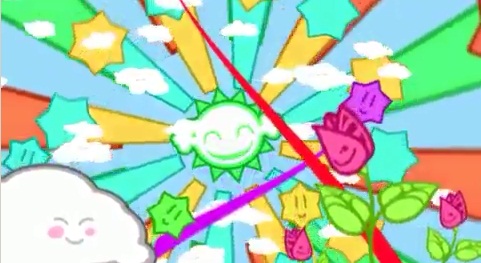
The Product
Farbrausch's eighth release, The Product, a "demo in 64k", was released at The Party 2000. It is similar to the demo Kasparov by EliteGroup, which was essentially the same group as Farbrausch, but while Kasparov was a demo sized several megabytes, The Product fit into merely 64 kilobytes. For this, it is primarily a great technical achievement that revolutionized the world of 64k intros. The enormous compression was mostly achieved by means of procedural texture generation. Instead of storing the textures as image files, the creators just stored the steps that were necessary to create these textures, and the actual textures were thus created by the intro itself, following these steps. This was a revolutionary idea and brought 64k intros to a new level. For this reason The Product has an enormous historical significance.
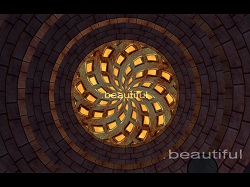 However, The Product is also an intro worth watching. The graphics are nice, and the music, made by KB, is very good. The soundtrack is calm and inspiring, and as it is with many great demo soundtracks, it is good enough to listen to it alone without watching the action on screen.
However, The Product is also an intro worth watching. The graphics are nice, and the music, made by KB, is very good. The soundtrack is calm and inspiring, and as it is with many great demo soundtracks, it is good enough to listen to it alone without watching the action on screen.
Project 2501
This demo by the Polish group Addict Labs was the winner demo of Symphony 2006. The scene is set in a futuristic factory in which roboters are building a new robot of their kind, a humanoid. We get to see the pumping heart of this humanoid and also the veins, through which we "fly".
The quality of the textures is very high and everything looks very polished. A worthy winner demo.
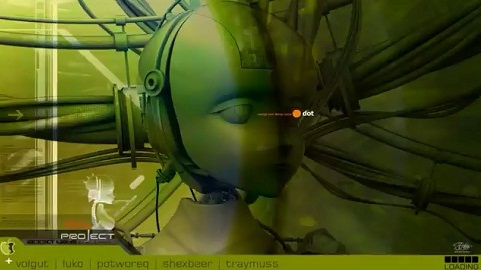
VIP2
The demo VIP2 by the French group Popsy Team was released at Takeover 2000 and served as an invitation demo for the Very Important Party 2, which happened a few months later. VIP2 is one of the most beautiful demos that has ever been made. The action on screen is perfectly synchronized with the music. The only thing that caused some controversies within the demoscene is the fact that the music is not original: it is a song of a professional music group and was used without permission. However, as far as I know this did not lead to a lawsuit. Like the demos by ASD, VIP2 contains a fireworks of effects and you will never get bored by the action on screen.

Lifeforce
The ASD demo of the year 2007 is a very creative demo with a lot of graphics and effects and even some sort of message, which leaves some room for interpretation. As always, Navis did the coding and aMUSiC and Leviathan were responsible for the music.
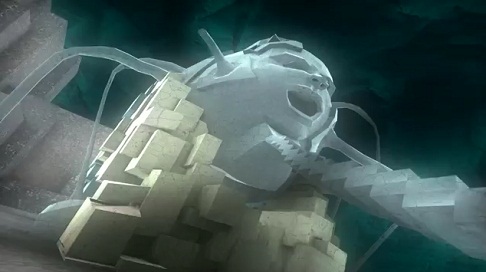
Happiness is around the bend
This demo by ASD, from 2010, is technically the most outstanding demo from my list. It features photorealistic rendering and some very sophisticated morphing effects and other effects. It is also a rather long demo and this makes it a great artistic and technical achievement.

Conclusion
These are my ten favourite demos and intros from the PC demoscene. Four of them also appear in the pouet.net all-time top ten, the others are a bit less popular according to pouet.net.
